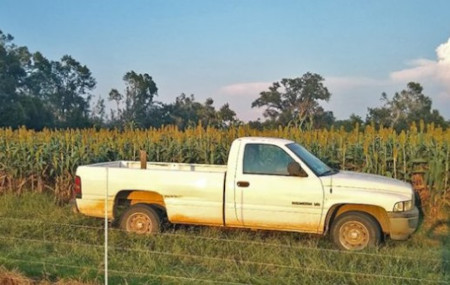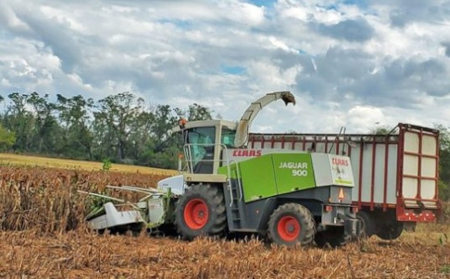By Nicolas DiLorenzo
The current COVID-19 pandemic has affected not only our daily lives, but also most of the agricultural markets. The cattle market is no exception. As a result of some processing plants temporarily shutting down and an overall reduced kill capacity through the spring, the backlog of cattle to be harvested is significant. Feedlot placements have decreased in the last few months and some reports show more than a 40 lb increases in carcass weights of cattle being harvested now, as a result of longer feeding times. These factors and the corresponding effects on cattle prices are forcing producers nationwide to adapt to the new conditions. Florida producers are considering delaying the marketing of weaned calves with the hope for better prices in the months ahead. The greatest challenge with this approach is how to meet the nutritional requirements of growing calves during the summer and fall, when typical grass pastures have nutrient limitations.
What options are available to feed growing cattle in the summer and fall?
The current market conditions have sparked a renewed interest in certain crops and forages with potential use to background growing cattle. Two weeks ago, another article in this publication presented
pearl millet as an alternative summer annual forage in the region. Recent research efforts at the University of Florida NFREC have demonstrated the potential of another summer annual crop to be used: sorghum. Similar to pearl millet, sorghum is not a new crop; however, breeding efforts have improved the nutritional quality of this crop when used, for example, as whole-plant silage for cattle feeding. Some of the more important advances in forage sorghum breeding have been made in terms of insect tolerance. New hybrids are emerging with certain degree of tolerance to
sugarcane aphid, a well-known enemy of sorghum production in Florida. While newer hybrids with tolerance to sugarcane aphids may not completely eliminate the need to scout and spray for this pest, they certainly appear to have increased the window of opportunity for spraying and even reduced total number of applications needed for a successful crop.

Figure 2. Forage sorghum crop production at NFREC in 2019. Photo Credit: Federico Podversich, UF/IFAS
Yield and costs of sorghum silage
The average yield of forage sorghum harvested for silage across several hybrids in the 2018 and 2019 variety trials conducted at the University of Florida was 7.5 tons of dry matter (DM) per acre. At a 35% DM, this is equivalent to 21 tons of green chopped forage per acre. Considering typical planting costs of $250-$350/acre, and adding approximately $60/ton of silage DM in chopping and bagging costs, the total cost of sorghum silage DM can vary between $93 and $107 per ton, depending on production costs and yield. This is quite competitive considering the quality of the forage harvested and conserved. Figures 1,2, and 3 highlight results from the UF-NFREC trial in 2019 growing and harvesting sorghum as silage. As an anecdote (more information to be released in subsequent editions of the Panhandle Ag e-News), cattle fed at NFREC for 56 days a diet of 90% sorghum silage and 10% dry distillers grains (DDGS), gained at a rate of 1.5 lb/day. This rate of gain is almost ideal for developing heifers, and not bad considering other alternatives, particularly in the fall, and the cost per pound of weight gained.

Figure 3. Forage sorghum silage harvesting at NFREC in 2019. Photo Credit: Nicolas DiLorenzo, UF/IFAS
Take Home Message
As alterations to markets during the current pandemic force producers to be creative in terms of marketing cattle, cost-effective forage crops need to be considered, if growing cattle are to be retained for a period after weaning. Whole-plant sorghum silage emerges as a potential cost-effective alternative for producers in the Florida Panhandle, with total production costs per ton of DM harvested ~$100 per ton.
Source : ufl.edu